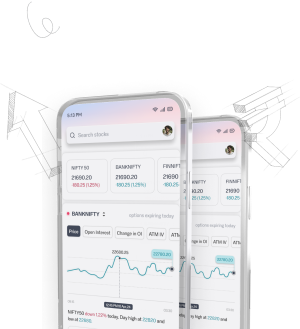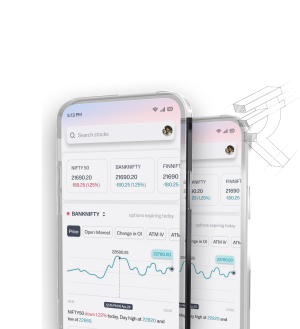Williams %R: A momentum oscillator, Larry Williams, for reading overbought and oversold conditions.
The Williams %R, developed by Larry Williams, is one of the important momentum indicators. It will help in finding the overbought and oversold situations in markets like the active Indian market. It's essential for our trading plans to decide when to buy or sell. Understanding how the Williams %R works is essential for traders. It expresses the market trends, making it useful for effective trade. This article will take a close look at the usage of the Williams %R. It aims to help us make better trading decisions.
Main Points
- Williams %R oscillates between zero and -100, thus clearly indicating the conditions of the market.
- A reading above -20 is overbought, while below -80, it's oversold.
- The Williams %R formula is: Williams %R = (Highest High – Close) / (Highest High – Lowest Low).
- This oscillator may be used to point out probable turns in the markets.
We often look for crossovers at −80 and −20 as signs of changing trends.
What is Williams %R?
Williams %R, or the Williams Percent Range, is one of the most important momentum indicators traders use. It changes over a range of 0 to –100. It helps identify when markets are very high or very low.
This indicator evaluates the closing price of an asset and its highest and lowest prices over 14 days. It is one of the technical analysis tools used by traders. It signals when prices are too high or too low. Levels above -20 mean prices are too high. Levels below -80 mean they're too low. These levels help predict market changes.
The Williams %R indicator is handy for finding trading opportunities, be it swing trading, day trading, or investing for the long term. However, this is a lagging indicator. Thus, traders blend it with other tools of use to make better choices. Very important levels: -50 signals a possibility of a price change. Remember, Williams %R does not indicate price direction or strength; using it with other tools helps in trading, especially in markets like India.
| Feature | Description |
|---|---|
| Oscillation Range | 0 to –100 |
| Overbought Level | Above -20 |
| Oversold Level | Below -80 |
| Normal Lookback Time | 14 days |
| Crossover Signal Level | -50 |
Williams %R is an important tool for traders. It helps us understand how people feel about the market. Knowing how to use it helps us handle market changes.
Understanding the Williams %R Indicator
The Williams %R indicator is another important tool that traders use in the financial markets. It produces buy and sell signals by determining if an asset is overbought or oversold. It has a range from 0 to –100. A reading above –20 means an overbought market, while one below –80 means an oversold market.
We will now consider the price changes over 14 time periods, which is normal. The indicator looks at the highest high, the lowest low, and the most recent closing price to give us insight into the market trend. Values between -20 and -80 relate to the stability of the market.
Using the Williams %R, we act on its signals. For example, we buy when it moves above -80 and sell when the value drops below -20, so as to help us in establishing market trends and price levels. However, always remember that because of the noise, this indicator can sometimes be wrong.
The Williams %R comes in handy during many types of trading. It identifies situations whereby prices have gone either too high or too low and is thus useful for traders seeking to enhance their skills in financial markets.
Williams %R Calculations
The Williams %R calculation is a simple way to measure stock market momentum. It compares closing prices with highs and lows over 14 periods. The formula is:
[ \text{Williams %R} = \frac{\text{Highest High} - \text{Close}}{\text{Highest High} - \text{Lowest Low}} \times -100 ]
We first find the highest high and the lowest low for the given past period. Thereafter, we calculate the values with recent closing prices to find the Williams %R. This will help us in determining market conditions and refine our trading strategies. The Williams %R goes from 0 to -100. If it's over -20, the market is overbought. If it's below -80, it's oversold. This helps us understand it better in making trading decisions.
Putting the Williams %R into our trade execution planning provides good trade entry or exit timing, which gives us a better view of the market and hence more trading confidence.
How to Interpret Williams %R
The Williams %R understanding helps us expect changes in the market. This tool tells us about general market conditions. It helps traders find good times to buy or sell. By understanding significant levels, we can treat overbought and oversold situations satisfactorily.
Finding Overbought and Oversold Situations
The Williams %R moves from 0 to -100. When it crosses above -20, that means the market has a potential comeback. Below -80, it is too cheap and might be a good time to buy. These levels are important for our trading plans.
Divergence Signals in Williams %R
Basically, divergence signals tell us that the market may change direction. For instance, when prices go higher but the Williams %R goes down, a price drop would most likely be nearing. Understanding these signals helps us make better trading decisions and manage risks.
Applying Williams %R in Real Life
The Williams %R indicator improves trading decisions. It shows when to buy and sell. It is good when used with other tools in pinning down the best time to trade.
Using the Indicator for Entry and Exit Points
The Williams %R will definitely help our trading. It has readings that range from -100 to 0, showing when prices are too high or too low. A reading below -80 warrants buying. A reading above -20 gives the sell signal.
This helps in picking out the best times to get in and out. It enables us to fully exploit changes in markets.
Confirmation Tool for Other Indicators
We get a better analysis when we use the Williams %R in conjunction with other indicators. This helps in confirming our market signals. For instance, if Williams' %R is giving the sell signal, indicating that prices are too high, and at the same time, moving averages are showing a drop, then it is time to sell.
This way we can take better risks and make our trading plans stronger.
| Condition | Williams %R Value | Trading Action |
|---|---|---|
| Overbought | Above -20 | Consider Selling |
| Oversold | Below -80 | Consider Buying |
| Bullish Divergence | Lower Lows in Price & Higher Lows in %R | Seek Buying Opportunities |
| Bearish Divergence | Higher Highs in Price and Lower Highs in %R | Seek Selling Opportunity |
The Difference Between Williams %R and other Oscillators
Looking at momentum oscillators allows us to understand how various tools work. We can see that Williams %R and Fast Stochastic Oscillator help to define the trend of the market. They give us different perspectives on the market.
Looking at Williams %R and the Fast Stochastic Oscillator
Williams %R moves within the range of 0 and –100. It indicates oversold of – 80 and overbought of – 20; it is focused on the distance from the closing price to the highest price in the past 14 days.
The tool becomes more sensitive and shows more signals on price changes.
The Fast Stochastic Oscillator also ranges from 0 to 100. It looks at the closing price in relation to the highest and lowest prices over a specific time. It has two lines: %K shows current prices and %D gives a smoother view of changes.
They both mobilize 20 and 80 to show when prices are too high or too low. But Williams %R is more effective in finding when the indicator and price don't match, something a price change might come from. Traders pick which one they'll use by the way they trade.
Knowing the differences helps us do so appropriately. It assists us in improving our ability to observe market trends and signals.
Limitations of Using Williams %R
The Williams %R indicator is helpful for traders. Many of us are using this in order to see how the market does. However, we need to understand its limits to draw a better trading plan. These limits help us deal with fluctuating markets.
Problems in Confirming Trends
One huge shortcoming of the Williams %R is that it is worthless for confirming trends; it is flat-out wrong in trending markets. For instance, if prices continue to move in one direction, it will give a far-too-early overbought or oversold signal.
This may make one avoid good deals or even exit trades too soon. Therefore, it is when a consideration of the Williams %R has to be taken into the context of the wider market.
False Signal and Market Condition
Another big problem is getting wrong signals. Williams %R can change quite a bit, especially in shaky markets. It can easily create lots of buy and sell signals, making it difficult to know what to do.
Using the indicator alone has caused us to lose money. Thus, we should always use it with other tools for better analysis. This avoids bad trades and helps improve our trading.
Conclude
This indicator is useful in identifying the trend of the market. It helps to know a period when the market is too high or too low. With the values from 0 to -100, we will see when the market changes its way.
Values above -20 mean the market is too high, and values below -80 mean it's too low. This information helps us create better trading plans.
Williams %R is one of the trading indicators that helps us to determine good times for buying and selling. We must be very careful not to be misled by its signals in calm markets. It is better to use it with other tools and careful planning.
It can very well be helpful to know how to use and then understand the Williams %R. Using this tool in our trading plans, it helps us make better decisions in the marketplace.
FAQ
What is Williams' %R indicator used for?
The Williams %R indicator reflects an overadequacy or inadequacy of the market; it helps a trader to make good decisions.
How is the Williams %R calculated?
To determine Williams %R: Williams %R = - 100 x ( the Highest High - Close) / ( the Highest High - the Lowest Low), within the previous 14 days.
What do the Williams %R levels show?
Levels above -20 show the market is too high and could fall. Levels below -80 indicate it is too low and could rise.
Can we use Williams %R along with other indicators?
Yes! Using Williams %R with other tools, like Moving Averages, makes us prepare some effective and useful trading plans.
What is the limitation of the Williams %R Indicator?
It is hard to confirm trends and in fast markets may even give false signals. This might often lead us to miss good trading opportunities.
How can we find divergence signals using Williams %R?
Divergence happens when the price goes one way but Williams %R goes in the opposite direction. Normally this is an indication that a price move is about to happen, very much to our intention.
Is the Willimas %R suitable for all trading strategies?
Williams %R is flexible yet has to fit our trading style. It works best with other tools and management of risk for maximum results.
Disclaimer
The content provided is for educational purposes only and does not constitute financial advice. For full details, refer to the disclaimer document.


